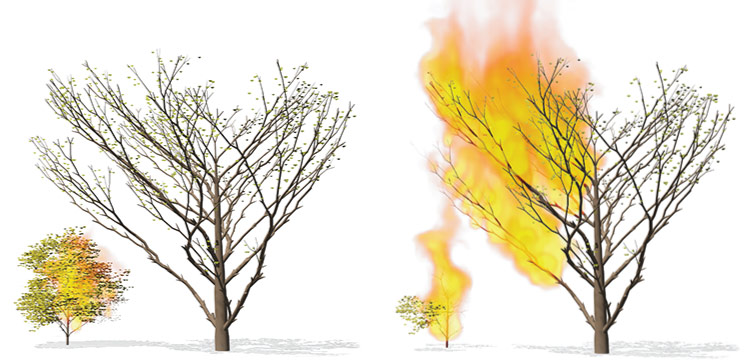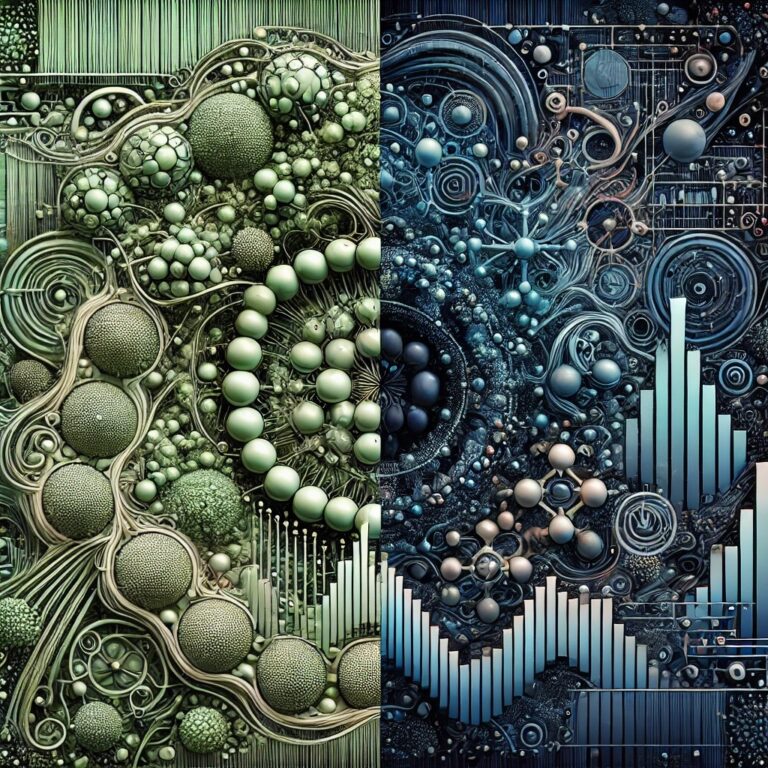Computer Science
Wildfire simulation heats up
Computational models capture the capricious behavior of forest fires.

KAUST researchers have developed a new method to model the combustion of individual trees, which could help to predict the spread of forest fires. © 2021 KAUST; Shannen Banzuela. /en/article/1154/wildfire-simulation-heats-up
KAUST researchers have developed a new method to model the combustion of individual trees, which could help to predict the spread of forest fires. © 2021 KAUST; Shannen Banzuela. /en/article/1154/wildfire-simulation-heats-up
Computer simulations can predict the spread of wildfires through sections of a real forest using a realistic yet computationally efficient new method to model the combustion of individual trees. The model, which accurately captures wildfire behavior at forest scale, was created by KAUST researchers and their international collaborators.
“Our work can help to make real forest fires more predictable by simulating potential fire scenarios with real forestry data,” says Torsten Hädrich, a Ph.D. student in Dominik Michels’ group. “We are also able to simulate how firebreaks in forests can be used to contain fire spread,” he adds.
Climate change simulations have long predicted a global rise in the prevalence and intensity of wildfires. “We titled our research paper ‘Fire in Paradise’ in reference to the northern Californian town of Paradise that was devastated by a wildfire in November 2018, resulting in more than 80 fatalities,” says Michels, who led the research.
“Our approach is capable of realistically simulating the propagation of fire through entire ecosystems”
Accurate computational simulations could improve our understanding and management of wildfire behavior. “The main challenge is to capture the complex dynamics involved,” Hädrich explains. The simulation must include a model for tree combustion and a fluid dynamics component for the simulation of fire while accounting for environmental variations, such as tree density, terrain and wind.
Previous forest-scale fire simulations have represented trees as simple cones or cylinders, but this extreme simplification of forest structure reduces the accuracy of the simulation. Hädrich, Michels and their collaborators developed a method to model trees as collections of branch-like modules. “Our module-based representation provides a way to control the level of detail for the simulation,” Hädrich says.
Depending on the scenario being simulated, each tree can be represented either by many detailed modules to generate highly realistic branching structures or by fewer coarser modules for efficient computation. “Our approach is capable of realistically simulating the propagation of fire through entire ecosystems with varying forest cover,” Hädrich says.
Further improvements of the predictive accuracy of the simulation include modeling the cloud formation and rainfall that can result as water vapor is released from burning vegetation. Additional refinements to the simulation are planned, notes Michels. “We would like to include the simulation of sparks flying through the air and address fire spread on the ground facilitated by grass, branch litter and undergrowth vegetation,” he says. “We also plan to further validate our approach using satellite images of real wildfires,” Michels adds.
References
- Hädrich, T., Banuti, D.T., Pałubicki, W., Pirk, S. & Michels, D.L. Fire in Paradise: Mesoscale simulation of wildfires. ACM Transactions on Graphics 40, 163 (2021).| article
You might also like

Computer Science
Green quantum computing takes to the skies

Computer Science
Probing the internet’s hidden middleboxes

Bioscience
AI speeds up human embryo model research

Computer Science
Improving chip design on every level

Computer Science
Sweat-sniffing sensor could make workouts smarter

Computer Science
A blindfold approach improves machine learning privacy

Computer Science
AI tool maps hidden links between diseases

Bioscience




